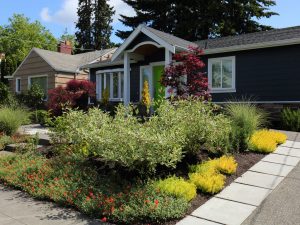There’s no busier time of year for the avid gardener. The weather is getting warmer, the soil is ready for planting, and the garden center is bursting at the seams with new arrivals. Our annual final frost typically occurs around March 15, but this year has been unseasonably warm and many gardeners are itching to get started. Here are a few tips from Esposito Garden Center in Tallahassee.
Pruning
It’s time to finish any heavy pruning of trees or shrubs. You can hold of on pruning any spring flowering shrubs until they are finished blooming.
For shrubs that appear cold-damaged, wait until you can see the new growth to begin pruning. You may be surprised to see that there is less damage than you expected. Old, overgrown woody shrubs including tea olive, ligustrum, and hollies, may be rejuvenated with heavy pruning. Cut them to within a foot or two from the ground and allow them to grow back.Thin the fruit on apples, persimmons, and pears as the clusters form. Thin peaches and nectarines before they reach the size of a walnut.
Planting Trees
Early March is an excellent time to plant trees and shrubs, but the sooner the better! As it heats up, it becomes more difficult for newly planted trees to thrive, so it’s best to get them in the ground before temperatures start to climb. If you select your spring flowering trees while they are in bloom, it’s easy to see exactly what you can expect for years to come. Be sure to check out the Japanese Magnolias and Redbuds while they’re still in bloom!
It’s a great time to add some fruit trees, shrubs, or vines to your yard. Make sure to ask about pollination requirements; some fruit trees require a partner.
Lawn Care
Sharpen your mower blades and take care of any mower maintenance. A dull blade makes a rough cut which can damage your grass. Keep an eye on this throughout the season; sharp blades make for a healthier lawn. Mow every 2 weeks to prevent winter weeds from spreading. If you planted winter rye over your lawn, cut it as low as possible so the sun can reach the permanent grass. Once the soil warms up, it’s safe to add plugs of St. Augustine or centipede grass. Wait until about 3 weeks after your lawn completely greens up to fertilize.
Fertilization
Perform a soil test to determine your exact fertilization needs. Fertilize young trees and shrubs with a balanced fertilizer (Plant Tone is a good organic option, but you can also use a general liquid or granular fertilizer, or even easy-to-use fertilizer stakes). Fruit trees such as peaches, pecans, grapes, pears, plums, figs, and persimmons should be fertilized with a fertilizer containing zinc and other minor elements. Also fertilize citrus and bananas with their respective fertilizers. After risk of frost, cut back and fertilize frost damaged perennials. Fertilize annuals with a bloom booster or general fertilizer at time of planting and once a month thereafter; plant veggies, perennials, and new trees or shrubs with a starter fertilizer that includes mycorrhizae (Bio-tone Starter Plus is a great one).
Happy gardening!
